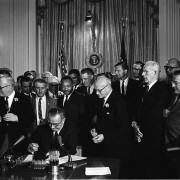How Pilots Make Decisions
We last spoke of the tremendous responsibilities of people who hold positions of Authority. They are often successful if they have made a habit of making decisions and taking stock on the outcomes of their choices.
Aviators are tasked to work in a complex environment that changes rapidly, and has inherent risks that require critical decisions having outcomes with major impact, including loss of life.
To operate successfully, pilots require training and skills that mitigate the risks and ensure optimum outcomes regardless of the challenges presented.
One of the skills involves decision making. Rapid decision making is often the only option. The correct choice can have a critical impact and needs to be taken with the utmost of care. So, does this sound daunting and impossible?
If you are initially thrown into this environment then clearly the results would not go favourably. Training becomes the foundation for success. In addition, a mindset of discipline, responsibility and priority action play essential roles as well.
As we explore these concepts, we discover that they apply to us on a daily basis.
Those who drive a car in traffic, adverse weather, unfamiliar freeways interchanges are called upon to make critical decisions involving limited time.
Workplace demands involving crucial negotiations may force you into positions where the response time is compressed and you are provided with little choice but the decision to act. Let’s not forget that taking no action is a decision in itself and will have consequences either way.
So, how do we train ourselves and our team to respond in the best possible way before the crisis occurs? What principles and values do we absorb into our operations to ensure the most effective results at critical times? Effective leaders just as Aircraft Commanders, know the path – and lead the team to enhance their power throughout any challenge. Next post, we can share 6 steps to better decisions.



